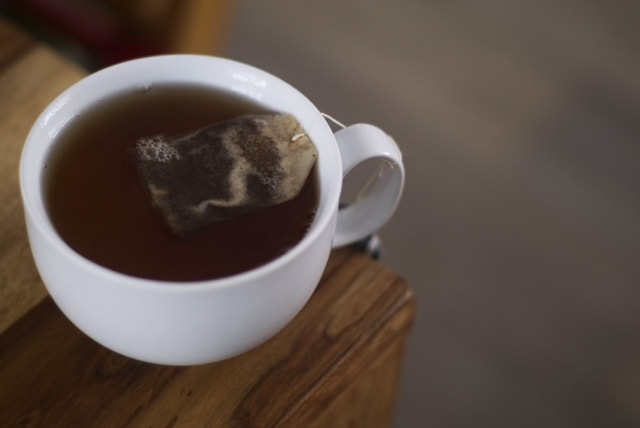|
Tea prices increasing a lot faster than coffee prices in South Africa
Date: 10 October 2018 Category: Economics |
Related Topics |
|
We take a look at the rate of inflation of various types of hot drinks and find that coffee prices are increasing at a rate a lower than that of tea.
Rooibos tea has shown particularly strong price increases since December 2016 compared to that of instant coffee. |
Inflation of coffee types vs tea types
The line chart below shows the inflation rate of various hot drinks such as instant coffee, black tea and Rooibos tea from December 2016. December 2016 =100, thus any value reported above 100 shows a price increase, while a value below 100 shows a price decrease.
So what the graphic above is showing that since December 2016 the various hot drink types experienced the following levels of inflation:
From the above graphic and numbers it is clear that the inflation rate/price increases for Rooibos tea far outstripped regular Ceylon/black tea, with it increasing 10.4% more than Ceylon/black tea since December 2016. The increase in Rooibos tea prices is 8.5 times the increase of instant coffee and ground coffee.
In November 2015, there was an article on Fin24.com that stated the drought could send Rooibos tea prices skyrocketing. Well based on the numbers above this certainly seems to be the case. Below the article from the Fin24.com
From frothy red lattes to rust-coloured teas, popular rooibos drinks will likely become scarcer and more expensive because of a widespread drought in South Africa, including in scrubland where the rooibos plant normally flourishes. A crippling rooibos harvest may lead to a 90% price increase, a trade council said on Thursday. The United States is one of the biggest importers of rooibos tea.
Final harvest
There was little rainfall during the July and August planting months which could cause the worst harvest in years, the SA Rooibos Council said in a statement.Farmers will only know the extent of their losses in the first half of 2016 when the volume of the final harvest is known, said council spokesperson Ernest du Toit. Last year's rooibos harvest yielded 11 000 metric tons."Although difficult to evaluate the true impact of the drought at this stage, we expect it to be significant," du Toit said in the statement. "As things stand, there will not be enough volume to service both the local and export demand."
Household products
South Africa exports more than half of its annual rooibos harvest to more than 30 countries, with Germany, Japan, the Netherlands, the United Kingdom and the United States making up its biggest markets, according to the council's website. The rooibos industry, which also produces skincare and household products, earns an estimated R500m. The rooibos plant is indigenous to South Africa.
End article. Orginal article can be found here
So coffee drinkers rejoice, those who enjoy a cup of Rooibos instead of coffee, might soon be switching to coffee as Rooibos tea price increases bite.
- Instant coffee: 3.1%
- Coffee beans and ground coffee: 3.1%
- Ceylon/ black tea: 16%
- Rooibos tea: 26.4%
From the above graphic and numbers it is clear that the inflation rate/price increases for Rooibos tea far outstripped regular Ceylon/black tea, with it increasing 10.4% more than Ceylon/black tea since December 2016. The increase in Rooibos tea prices is 8.5 times the increase of instant coffee and ground coffee.
In November 2015, there was an article on Fin24.com that stated the drought could send Rooibos tea prices skyrocketing. Well based on the numbers above this certainly seems to be the case. Below the article from the Fin24.com
From frothy red lattes to rust-coloured teas, popular rooibos drinks will likely become scarcer and more expensive because of a widespread drought in South Africa, including in scrubland where the rooibos plant normally flourishes. A crippling rooibos harvest may lead to a 90% price increase, a trade council said on Thursday. The United States is one of the biggest importers of rooibos tea.
Final harvest
There was little rainfall during the July and August planting months which could cause the worst harvest in years, the SA Rooibos Council said in a statement.Farmers will only know the extent of their losses in the first half of 2016 when the volume of the final harvest is known, said council spokesperson Ernest du Toit. Last year's rooibos harvest yielded 11 000 metric tons."Although difficult to evaluate the true impact of the drought at this stage, we expect it to be significant," du Toit said in the statement. "As things stand, there will not be enough volume to service both the local and export demand."
Household products
South Africa exports more than half of its annual rooibos harvest to more than 30 countries, with Germany, Japan, the Netherlands, the United Kingdom and the United States making up its biggest markets, according to the council's website. The rooibos industry, which also produces skincare and household products, earns an estimated R500m. The rooibos plant is indigenous to South Africa.
End article. Orginal article can be found here
So coffee drinkers rejoice, those who enjoy a cup of Rooibos instead of coffee, might soon be switching to coffee as Rooibos tea price increases bite.
